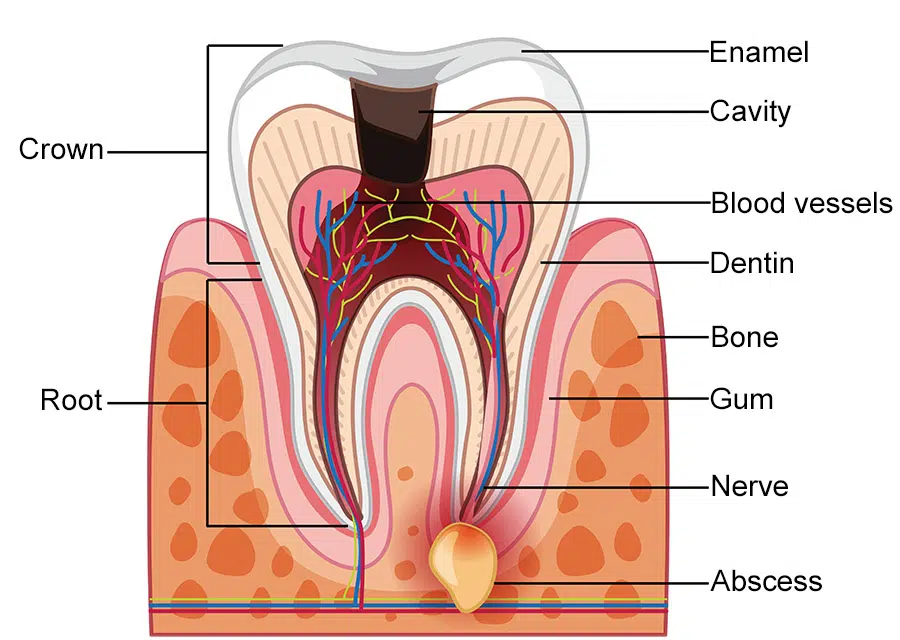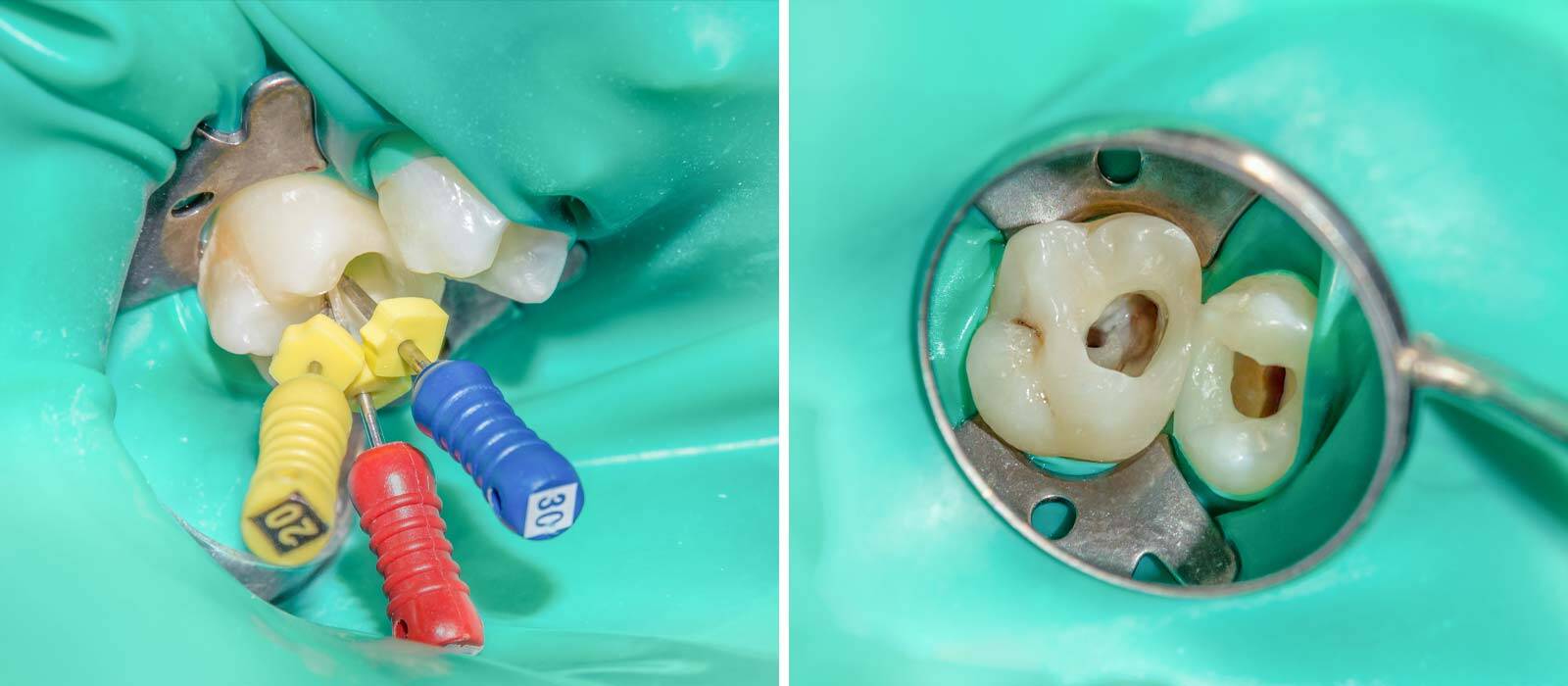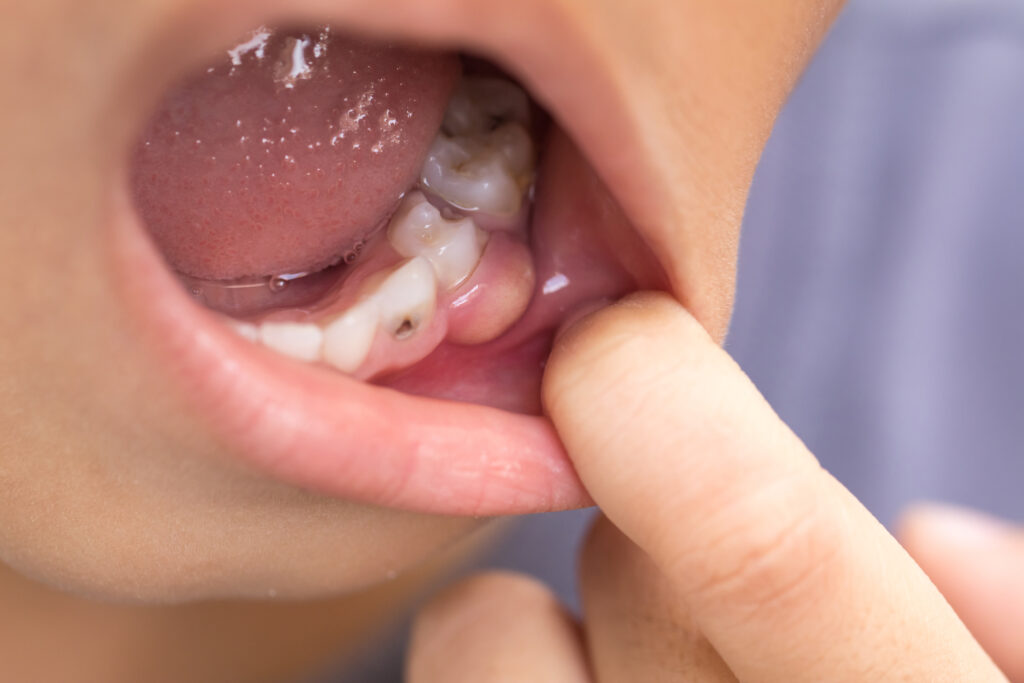 Gum and tooth abscesses can cause significant pain and indicate an underlying infection that needs urgent care. A dental abscess is a pocket of pus that forms in the gums or tooth roots due to bacteria.
Gum and tooth abscesses can cause significant pain and indicate an underlying infection that needs urgent care. A dental abscess is a pocket of pus that forms in the gums or tooth roots due to bacteria.
Understanding the causes, symptoms, and treatments for these abscesses is important for finding relief and preventing complications.
At Amazing Smiles, our dental team is ready to help. If you’re in pain from a gum or tooth abscess, we can provide the relief you need.
We offer thorough examinations and treatment options to restore your oral health. Don’t wait for the abscess and pain to worsen. Contact us today to schedule your consultation and start your journey to a healthier, pain-free smile.
 Dental Abscess Causes and Symptoms
Dental Abscess Causes and Symptoms
Dental abscesses, which can occur in gums or teeth, often result from untreated decay, gum disease, dental trauma, or failed procedures.
Common symptoms include:
- Severe, throbbing toothache
- Swelling of the face or gums
- Tender and swollen lymph nodes
- Fever
- A pimple-like bump on the gums or near the affected tooth
If you notice any of these symptoms, seek dental care promptly.
Professional Diagnosis
At Amazing Smiles, your dentist will examine your mouth if you exhibit signs of an abscess. This includes a visual inspection, dental X-rays to assess the infection’s extent, and specific tests to identify the cause. Accurate diagnosis is essential for developing an effective treatment plan.
Tooth Abscess
A tooth abscess is a localized infection at the tooth root or between the tooth and gum. It typically results from bacteria infiltrating the tooth due to decay, cavities, or cracks. This infection causes pus accumulation, leading to swelling, severe pain, and possibly a visible bump on the gum. Immediate dental treatment is crucial to relieve pain, treat the infection, and prevent complications.
Gum Abscess
A gum abscess, or periodontal abscess, is an infection in the gum tissue caused by bacteria entering the space between the tooth and gum. It often occurs due to gum disease and can arise from untreated infections or deep gum pockets. Prompt treatment is essential to relieve symptoms, eliminate the infection, and prevent further complications.

Causes & Dental Treatment Options for an Abscess
We're here to help treat your dental abscess
Treating gum and tooth abscesses aims to eliminate the infection, alleviate pain, and preserve the affected tooth and surrounding oral structures. The specific treatments may vary based on the severity of the abscess and the extent of the infection. Standard treatment methods include:
Antibiotics
If the infection has spread beyond the abscess site or you have a weakened immune system, your dentist might prescribe antibiotics to help clear the infection.
However, antibiotics alone are not a cure for a dental abscess; they can be used with other treatments.
Incision and Drainage
For a dental abscess that has formed a pus-filled pocket, a dentist may need to make a small cut to drain the pus, which can provide immediate relief from pain and pressure.
Root Canal Treatment
A root canal procedure may be necessary if the abscess originates from an infected tooth nerve (pulp). This involves removing the infected tissue, cleaning the root canals, and sealing them to prevent reinfection.
As a result, root canal therapy can save the tooth from extraction.
Gum Treatment
If the abscess is caused by gum disease, the dentist may perform deep cleaning procedures, such as scaling and root planing, to remove plaque and bacteria from the gums.
In more severe cases, surgical intervention may be required to eliminate the infection and restore gum health.
Tooth Extraction
When a tooth is severely damaged or cannot be saved, the dentist may recommend extracting it to prevent the spread of infection to nearby teeth and tissues.
After extraction, suitable tooth replacement options can be discussed.
Specialist Periodontist Referral
Dentists may refer patients to periodontists (gum specialists) for expert treatment when diagnosing a severe case. If an abscess has spread to the surrounding bone, surgical intervention might be required to remove the infected tissue and possibly treat the bone.
Following dental treatment for a gum or tooth abscess, it is essential to maintain good oral hygiene practices and adhere to any prescribed medications or follow-up appointments.
Regular dental check-ups and cleans and preventive measures such as brushing and flossing can help prevent future abscesses and maintain optimal oral health.
Treating infected pulp
When the inner tissue of a tooth, known as the pulp, becomes infected due to deep decay, cracks, or trauma, timely treatment is essential to save the tooth and prevent the infection from spreading. The most common procedure for treating infected pulp is root canal therapy, where the diseased pulp is carefully removed, the inside of the tooth is cleaned and disinfected, and then sealed with a filling or crown for protection.
Root Canal Treatment relieves pain and sensitivity and helps preserve the natural tooth structure, restoring both function and appearance. Without treatment, an infected pulp can lead to abscesses, swelling, and further damage to surrounding teeth and gums.
Gum abscess treatment
Gum treatment is essential for effectively addressing dental abscesses. It helps eliminate plaque, reduces inflammation, and prevents complications. Don’t let a dental abscess harm your oral health.
For severe gum infections, we may refer you to a Periodontist, a specialist in gum care.
At Amazing Smiles, our experienced dental team offers comprehensive gum treatments to tackle gum disease, a common cause of abscesses.
Contact us today to schedule a consultation and learn more about our superior gum treatment services.
Removing a tooth with an abscess
A dental abscess is a severe infection that forms around a tooth’s root or surrounding gums, causing severe pain, swelling, and sensitivity. Extraction may be necessary to stop the infection and protect your health if a tooth cannot be saved with root canal therapy.
Benefits of Tooth Extraction
- Prevents Spread of Infection: Removing the infected tooth stops bacteria from spreading to other teeth, gums, or the jawbone.
- Pain Relief: Extraction often provides immediate relief from intense pain caused by the abscess.
- Reduces Health Risks: It minimises the risks of complications such as facial swelling, jawbone damage, or life-threatening infections.
- Facilitates Healing: the area can heal once removed, allowing for future restorative options like implants or dentures.
Disadvantages of Tooth Extraction
- Permanent Loss: Unlike root canal therapy, extraction results in the permanent loss of the tooth, which can impact chewing, speech, and appearance.
- Additional Costs and Time: Replacing the extracted tooth requires time and money, and leaving the space can lead to shifting teeth and bite issues.
- Recovery Period: Post-extraction recovery may involve swelling and tenderness, requiring temporary dietary changes.
- Jawbone Shrinkage: Tooth loss can lead to gradual jawbone shrinkage if no replacement option is placed.
In some cases, extracting the tooth with an abscess may be the only effective way to stop the infection. While this means losing a natural tooth, it often relieves pain and prevents further complications. Your dentist will evaluate whether saving the tooth with a root canal or opting for extraction is the best action.
FAQ’s
Can you have a tooth infection and not need a root canal?
Yes, a tooth infection can exist without needing a root canal. Whether a root canal is necessary depends on the infection’s severity, location, and the tooth’s condition. Sometimes, a dental filling or a minor drainage procedure is sufficient. However, if the infection has impacted the tooth’s nerve or pulp, a root canal may be needed to remove the infected tissue and save the tooth. It’s essential to consult your dentist for an evaluation and to determine the best treatment to resolve the infection and maintain dental health.
Should an abscess tooth be pulled out?
Whether an abscessed tooth needs to be removed depends on the severity of the infection, the tooth’s condition, and your overall oral health. An abscess is serious and must be treated promptly to prevent spreading.
Extraction may be necessary if the tooth is severely damaged, usually after attempts to save it through antibiotics and root canal treatment. The dentist will also consider the health of the surrounding teeth and gums. In some cases, especially for individuals with weakened immune systems, quicker extraction may be recommended to prevent further infection.
Can a tooth abscess go away on its own?
A dental abscess won’t heal on its own. It may improve if your immune system fights it or if it drains, but the infection can persist. It’s crucial to see a dentist promptly for treatment to avoid complications, as delaying can spread the infection and damage surrounding teeth.
What do I do if a tooth abscess bursts?
Rinse your mouth with warm saltwater and spit it out to reduce bacteria. Brush gently around the affected area and use a cold compress on any swelling. Contact your dentist as soon as possible for proper treatment, even if the pain decreases. Prompt dental care is essential to prevent the infection from spreading.
What happens to the abscess after tooth extraction?
After a tooth extraction, the abscess in the affected tooth typically starts to heal. Removing the tooth eliminates the infection source, allowing your body to heal naturally. As the extraction site recovers, a blood clot protects the area and promotes tissue regeneration. Over time, the abscess should decrease, and symptoms like pain and swelling should improve. Follow your dentist’s post-operative instructions for proper healing and to reduce complications. If you have any concerns after the extraction, consult your dentist.
What is the difference between a tooth infection and tooth abscess?
A tooth infection is a bacterial infection inside the tooth, often due to deep decay or a crack. It causes pain, sensitivity, and swelling around the tooth. On the other hand, a tooth abscess is a more severe infection that spreads to surrounding tissues, creating a pocket of pus. Tooth infections can lead to intense pain, swelling, fever, and a pimple-like bump on the gum. Both conditions need prompt dental treatment, but a tooth abscess usually requires more serious interventions like a root canal or tooth extraction. It’s important to see a dentist for the appropriate treatment.
Are gum and tooth abscess the same?
Gum and tooth abscesses are different, but they can be related. A gum abscess, or periodontal abscess, is an infection in the gum tissue caused by bacteria entering the area between the tooth and gum. This often leads to swelling, pain, and pus formation, and it is commonly linked to gum disease and untreated infections.
In contrast, a tooth or periapical abscess occurs within the tooth itself, usually due to untreated tooth decay or dental injury that allows bacteria to infect the dental pulp. This infection spreads to the tooth root, resulting in pain, swelling, and an abscess at the root tip.
While both types can cause similar symptoms, they affect different areas: gum abscesses impact the gum tissue, while tooth abscesses involve the tooth and its root. Both require prompt dental treatment to relieve pain, eliminate infection, and prevent further issues. Consult a dentist for a proper diagnosis and treatment if you suspect you have an abscess.
What happens if a tooth abscess is left untreated?
If left untreated, a tooth abscess can lead to serious complications. The infection may spread to surrounding tissues, including the jawbone and other teeth, resulting in a more severe infection and significant pain. Over time, it can destroy the tooth’s supporting structures, such as bone and ligaments. In severe cases, the infection can spread to other body parts, causing serious health issues. It’s essential to seek dental care promptly to prevent these problems and treat the abscess properly.
What happens if a gum abscess is left untreated?
If untreated, a gum abscess can lead to serious complications, including the spread of infection to nearby tissues and bones, resulting in tooth mobility or loss. An abscess may rupture and release pus, but this doesn’t eliminate the infection. Without treatment, gum disease can recur and worsen. It’s essential to seek dental care promptly to prevent these issues.
We accept all major health funds

Make an Enquiry
We are proud to be preferred providers with most major health funds, allowing our patients to maximise their health cover benefits and access quality care at greater value. To make treatment more accessible, we also offer a variety of flexible payment plans, helping individuals manage the cost of their dental care in a way that best suits their financial situation.
Start your journey toward a healthier, more confident smile by booking your complimentary smile consultation with Amazing Smiles today.

 Dental Abscess Causes and Symptoms
Dental Abscess Causes and Symptoms